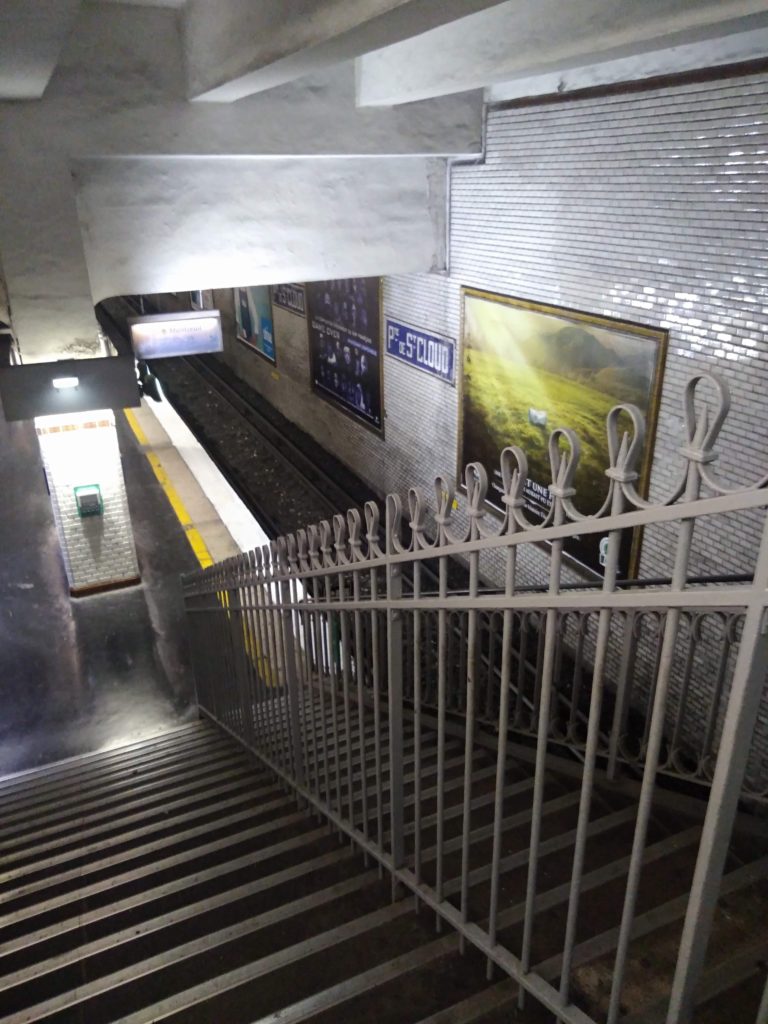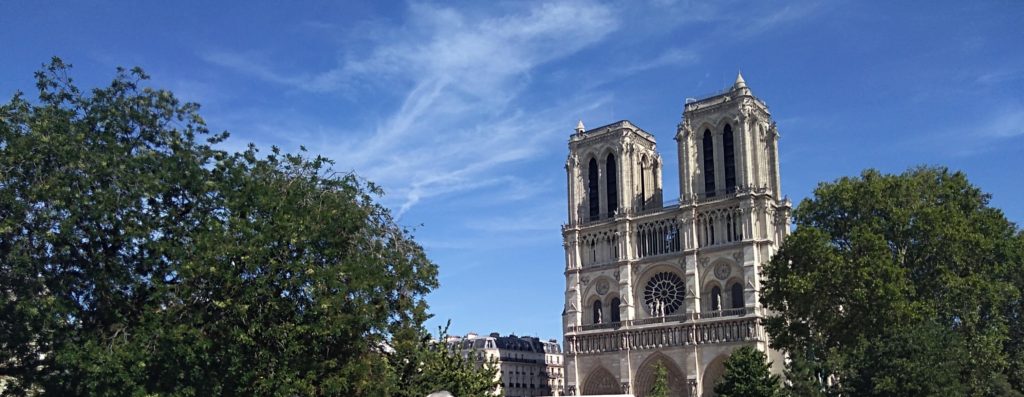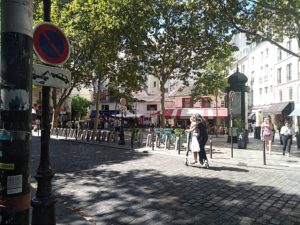PART ONE
I have visited Paris on many occasions since my childhood years and on each visit I have discovered new and interesting facts about this beautiful city.
Paris is rather like Marmite as you either fall in love with the city or cannot stand being with her. Personally, I find Paris quite mysterious and tend to agree with the poet who noted that the city reveals her body to you on your first date but no matter how much you explore her flesh, you do not really know what she is thinking.
Henry Miller being Henry Miller once said, Paris is like a whore. From a distance she seems ravishing, you can’t wait until you have her in your arms. And five minutes later you feel empty, disgusted with yourself. You feel tricked.
I can see where Henry was coming from but although I admire him wildly, I think that I prefer the poet’s description of the city.
She is mysterious and alluring, she wants to be your friend but will not suffer fools gladly and towards the end of August, a rather foolish Englishman stumbled on to the platform at Gard du Nord with his family wishing that he was not wearing a sweater as the temperature was around thirty degrees.
But by the time that he had fought his way towards the Metro, he knew that she had forgiven him.
Tip Number One – if you are travelling by Eurostar then purchase your Metro tickets on the train (a carnet of ten tickets) – this saves a lot of hassle at the railway station as the Metro interchange can be quite busy.
If you buy a carnet of tickets from the Metro machines (quite simple) then this will cost you 14.90 Euros whereas on the train, it cost me about 15.50, but the add on is a small price to pay especially if you have young children in tow.
I will not try to describe the Metro as I personally find getting around quite easy. There are some great websites that tell you all you want to know about travelling on the Metro so I will not complicate matters. As a rule of thumb I believe that if you can get around on the London Underground then you will find the Metro quite easy.
This said, whilst we have East Finchley and Notting Hill Gate, Paris has Franklin D Roosevelt and Colonel Fabian but that is a different story altogether.
We were staying near to the Colonel Fabian Metro station in the borders of the 10th and 19th Arrondissements in North East Paris. The station had been named after the French Resistance hero Pierre Georges (1919-1944) who was better known as Colonel Fabien.
I had stayed in nearby Stalingrad in the 1970s and knew my way around the area to some extent which was helpful. Also there was the incredibly beautiful Parc des Buttes-Chaumont nearby, but more of that later.
For as well as surviving the grandchildren, I was on the lookout for antiques and collectables and had been told that there was a small village tucked away between the Seine and the Place des Vosges.
Village St Paul
This village was the Village St Paul which was situated in the heart of Le Marais in the 4th Arrondissement. It is reached by travelling to the St Paul Metro Station and walking towards the impressive Saint-Paul-Saint Louis Church which was commissioned by the
naughty Cardinal Richelieu (you know the chap from The Three Musketeers). It is free to visit and well worth spending some time there and taking a break from the madness of the city. We all spent over fifteen minutes in this oasis of calm and its subdued atmosphere. Even kept both Wild Child and Damien quiet after a dispute about not being allowed to visit a heavenly cake shop nearby.
This had been recommended as one of the secrets of Paris far away from the normal tourist haunts and to be truthful, I was impressed by the maze of back streets and little shops away from the main street.
If the description of Scruffy Chic was ever going to be applied to an area then it was most definitely going to refer to the Village St Paul.
But there was one problem, we had chosen the wrong day as everything was closed and the only activity seemed to be the work of builders renovating some of the more derelict apartments.
This said, the village had a Parisian charm of its own and it was great fun to explore the area slowly on a very hot August day.
We did find one or two outlets open and their prices varied although, I considered that sometimes you were paying a little more than the worth because of the location. I found a rather nice piece of Limoges which I liked, but the tag of nearly thirty euros put me off.
Although I did not consider the Limoges, there were items in some of the closed antique shops which were much more moderately priced. I saw what appeared to be a souvenir of Deauville (it was probably pre-war judging from its design) and the price quoted was only four euros. If the shop had been open then I might have purchased this item.
The strange thing was, that although we did not buy anything, I did find six mysterious playing cards in a dusty alley. It was an odd find as there was no reason that they should have been there in the first place. I picked them up and put them in my back pocket and hope that Caron notices them when she washes my jeans (memo to my future self).
In all, even if you just take in the atmosphere, then the village is a good place to visit.
Unlike me, you might find a few more outlets open and if you are lucky, you might find a few more of those mysterious playing cards and failing this, there are the incredible cake shops.
Shakespeare and Company
As most of us know Shakespeare and Company is by far the most well known bookshop in the world and anybody who was anybody has hung out there. It is easy to find as it is nearly opposite Notre Dame in the Latin Quarter and this was probably my millionth visit to this independent bookshop.
I can remember hanging out there as an obscure but talented poet in the early 1970s hoping to be discovered and all these years later, hanging out at the same library knowing that I have maintained my obscurity rather well and maybe, I was not as talented as I once thought I was.
Oh the dreams of youth and the realities of middle age. But enough of a remembrance of things past and the thirtieth sonnet and its obvious connection to the bookshop.
Shakespeare and Company is a great place to visit if you have any feeling for books and the like. To be honest, new books can be expensive in Paris and Shakespeare is no exception as you will pay what you would expect to pay in any normal bookshop in Paris.
Indeed, and I apologise if I am wrong, but some of the books on the Beat Poets seemed to be a little more expensive than I expected.
Also, whilst I am on the subject of the Beats, do you realise that the poet and publisher Lawrence Ferlinghetti who has connections with the bookshop, celebrated his 100th birthday on March 24th 2019?
Happy Birthday Lawrence.
The library is upstairs and is a good place to just stop and chill and read a book (there is an extensive collection of books to choose from). You can stay for five minutes or you can stay for five hours (nobody will bother you) and if you are lucky enough to sit by the window, there is a great view of Notre Dame.
Sadly, the books in library are not for sale (it is a library) but the bookshop does sell second hand books although there was nothing that really attracted me on my visit. They range from two euros upwards and there is a mystery book in a box option which was six euros.

A few years ago I remember picking up a Huxley first for the price of a beggar’s meal but these older books seem a little thinner on the ground these days (or maybe I was not looking on the right shelves).
As it was thirty-two degrees on a late August day it was probably not the best time to visit Shakespeare and Company as it was rather crowded. But unlike a normal bookshop, this did not detract from the experience. Everybody was super-chilled and there was a talented young man playing Scott Joplin on the piano. I just loved it and although I did not find a book to love, I knew where I might find one and this place was just a stones throw away.
The nearest Metro stations to the bookshop are St Michel and Cluny-La Sorbonne but you can alight as far away as the Odeon Metro station which is in the heart of the Left Bank and if you walk in the general direction of Notre Dame, you will pass a number of quite reasonably priced second hand book/record/DVD shops.
There is also a great selection of cafes and bars in this the most vibrant area of Paris.
The Bouquinistes of Paris
The Bouquinistes of Paris are, as Wiki describes them, a series of booksellers of used and antiquarian books who ply their trade along large sections of the banks of the Seine. On the Left Bank, they stretch from the Quai de la Tourelle to the Quai Voltaire and on the Right Bank, from the Pont Marie to the Quai du Louvre.
It has been noted that the River Seine is the only river in the world that runs between two bookshelves. They are scruffy to an extent but so Paris Chic.
But, whereas Shakespeare and Company is only about books, the Bouquinistes are more than just booksellers.
To an extent, all of life is in those riverside boxes.
The idea which has been copied in other cities around the world can be traced back to the 17th century and these nine hundred green boxes and two hundred and forty Bouquinistes have been declared a UNESCO World Heritage site.
All the boxes, as far as I can see, have the same dimensions and there is a set rent and licence fee and the vendors are allowed to trade between sunrise and sunset. I have visited these guys for years and have noticed that more and more of them are beginning to sell general Paris tourist tack.
In one way this is sad, but these people still have to make a living so I just ignore the fridge magnets and Eiffel Tower key rings to look at the important items.
As you might of guessed, there is a huge selection of books both modern and antiquarian and within five minutes of my first visit, I had shelled out three euros for a 1960s paperback. The book in question was Henry Miller’s Nexus (1953) and although I had read all of his Rosy Crucifixion trilogy, I was seduced by its cover.
Later that day, as a treat for surviving both Wild Child and Damien, I spent twenty euros on an 1819 book on Christian beliefs and thought (as you can imagine I required forgiveness after reading the novels of my namesake). These were just two books out of literally thousands that were available.
If you wanted a book by Camus, then if you looked hard enough, you would find one or if you wanted to read an American pulp novel there was a good selection to choose from.
The most expensive antiquarian book I saw was sixty euros and the cheapest paperback one euro.
But it was not all about books and this is what made it so fascinating.
Catch up in Part 2 which will be published in next month’s Newsletter.
Until then….



